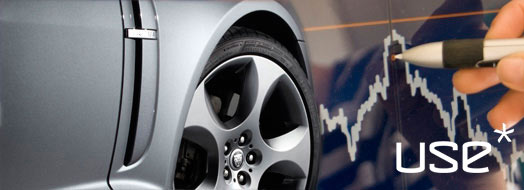Engineered-in Service Strategies for New Technologies
Our experience shows that our services offer more and more value, engaged earlier and earlier in the product development process. We can achieve more in terms of enablers for aftermarket revenue and enablers that will minimise aftermarket costs when we’re engaged in the development of fundamental vehicle architecture, than we can when our input helps shape a relatively mature package. There are benefits in both scenarios, but the benefit is inversely proportional to the maturity of the design.
Jonathan Quaife, USE* Managing Director
Digital serviceability support from USE* Automotive promotes and enculturates a design for serviceability mindset into product development activities. USE* classify these services as SERP (Service Evaluation and Repair Process), reflecting both the competent expertise that we provide to support this function and our out of the box process toolset that we can deploy and adapt to any of our clients’ product development PLM systems.
This engagement with new technologies development has worked to ensure that a voice for Service is heard in all aspects of concept design and technology development.

The Challenge
Before engagement with USE* Automotive, many of our clients saw service engineering engagement in product design as an activity beginning in traditional product development windows, when the concept development of new technologies, powertrains and vehicle architectures were already frozen. This meant that any fundamental changes to systems were either impossible, or prohibitively expensive.
The challenge for these clients, and for USE*, was to integrate service representation into technology development forums, to feed in service requirements and strategies as a means to ensure that new vehicle and technologies support long term aftermarket strategies.
The Solution
As well as the extension of more typical modes of SERP support far upstream (where the emphasis is upon utilising CAD and layout information to assess emerging ‘whole vehicle’ designs in the context of serviceability objectives), USE* support in concept design stages also necessitated fundamental representation of the Service agenda in advanced product development activities where new technology was being developed ex vehicle.
With product assumptions and direction still fluid at this stage, Service involvement in product and lifecycle planning activity facilitates a clear view of proposed model inception and content. This allows Service Engineers to plan for both timely support for forthcoming projects, and definition of suitable service strategies to be implemented in conjunction with nominated product technologies.
Through engagement directly with Research and research projects’ life cycles, it then became possible to integrate Service into the technology development process. Service requirements could now be supported by a service representative rather than be interpreted, or overlooked, by the specific project manager. This now ensures that all technology development supports Service goals to improve aftermarket support in the dealers, the client experience, and future service strategy.
With a keen eye on current vehicle performance in the 'real world', key feedback is sought from markets including current issues, client practice and market wants and needs. This information is then fed into whole-vehicle product development and also into new technology development.
As technology development matures, service representation becomes active within vehicle integration forums. This allows for the escalation of service opportunities and reporting of status on the basis of established targets or competitive positioning for aftermarket attributes such as projected warranty costs or Cost of Ownership.
Working proactively this way in the advanced upstream environment allows USE* Automotive to help our clients provide service support across all vehicle programmes and consistent, engineered-in service requirements.
Its Benefits
Our work within advanced upstream functions has so far delivered future powertrains, research projects and vehicle architectures with engineered-in service compatibility and strategy support. With clear visibility of service needs within the these forums, product development can liaise directly with service for quick, easy feedback and direction on service issues and intent.
Our Achievements
Extending the support offered by USE* Automotive to incorporate new technology has quickly become fundamental to supporting the SERP and wider upstream service engineering process tool set.
An example of this would be the development of a new powertrain: through liaising with the Powertrain Development team at such an early stage it has been possible to deliver and fulfil service requirements that impacted on fundamental engine architecture and design. With clear direction and visibility of these requirements, a powertrain can be designed and developed to meet all of the required criteria, with no additional cost or service compromise due to late change. This approach has delivered a powertrains that are competitive for service and supported Cost of Ownership targets.
New technology support has also pioneered service specific research projects to deliver advanced servicing technologies onto future client platforms, which can then be migrated across all vehicles. This allows a consistent approach to service messaging and client information, supporting a competitive position in the marketplace and enhancing the client experience of the product.
Case Studies
Case Studies
SERP for fleet vehicles
USE* support for the commercial arena
USE* in Concept Design
‘Design for service’ on carry-over technology
XF Residuals
The USE* contribution to the XF's world class ...
'Design for Service'
‘Design for service’ with USE*